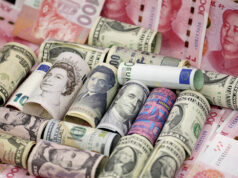Hot money back to net outflow on peso, inflation worries
MORE FOREIGN FUNDS left the Philippines in May, capping two months of net inflows, amid global geopolitical tensions and higher yields in the United States, the Bangko Sentral ng Pilipinas (BSP) reported on Thursday.
Foreign portfolio investments flows resulted in a $206.35-million net outflow last month, reversing from April’s $279.29-million net inflow and eight times bigger than the $24.35-million net outflow in May 2017.
These investments are referred to as “hot money” since they enter and leave the country with ease in the face of market-moving news.
May ended two straight months of net inflows and is the biggest gap seen since February’s $545.14 million in net outbound funds.
“This may be attributed to higher US Treasury yields and investor concerns on a weaker peso and rising oil prices which may affect inflation,” the BSP said in a statement.
The month also saw the BSP raise benchmark borrowing rates by 25 basis points in its May 10 policy meeting, which marked the first tightening move in nearly four years in a bid to rein in inflation expectations.
Inflation surged to a fresh five-year-high 4.6% in May, as oil prices touched fresh multi-year highs, while the peso traded at the P52-to-the-dollar level.
Foreign investors put in $1.212 billion in May, with the first week getting bulk of the month’s inflows of $333.88 million. Gross inflows were offset by $1.418 billion in outbound funds.
These flows compare to $1.485 billion in inbound funds received in May last year and $1.509 billion in gross outflows.
Around 80% of investments registered in May were in shares of publicly listed companies, particularly in banks; holding companies; property firms; food, beverage and tobacco companies; and transportation services companies, the BSP said. These placements, however, yielded net outflows.
CONCERNS
The BSP said outflows were largely due to market reaction to “renewed geopolitical tension between the US and China,” referring to the tariff war between the two nations. Sustained net foreign selling of shares among firms listed on the Philippine Stock Exchange also contributed to the outflows.
Meanwhile, a fifth of the investments went into government-issued debt papers which resulted in $74-million net inflows, the central bank added.
Despite May’s net outflows, the year’s first five months still yielded a positive tally. Year-to-date hot money flows resulted in a $797.19-million net inflow that turned around from $543.79-million net outflows recorded in 2017’s comparable five months.
Investors based in the United Kingdom, United States, Singapore, Malaysia and Hong Kong were the biggest sources of hot money in May.
About 77.4% of funds that left the Philippines in May went back to the United States. — M. L. T. Lopez


